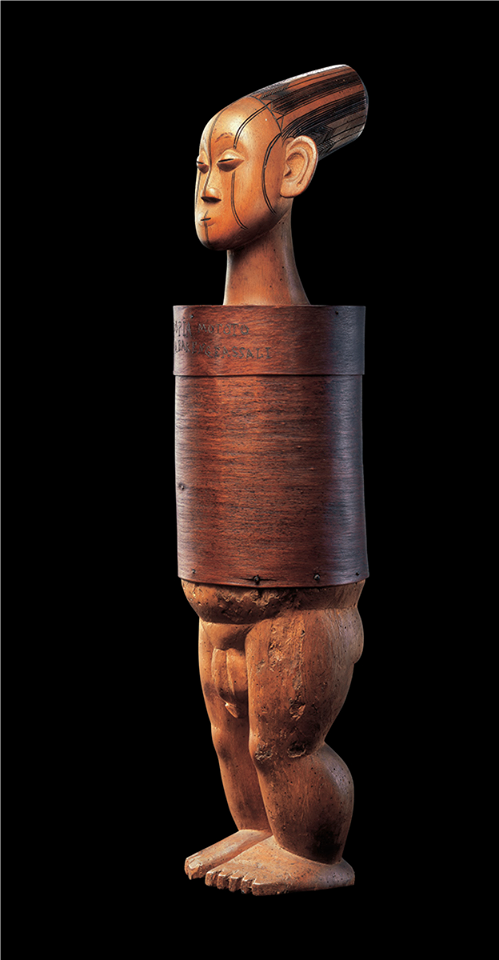The Mangbetu of the Democratic Republic of Congo have designed different types of boxes, the most elaborate and inventive of which are anthropomorphic. This receptacle, made of wood and bark, was intended to contain small personal items such as jewellery and not honey, as is commonly claimed.
The naturalistic style of the Mangbetu sculptures reflects a body aesthetic that distinguished the members of the aristocracy of the time. Daily massaging of the heads of infants and wrapping them in cords – when the bones were still soft and the stitches between those of the skull not yet welded – caused them to elongate, accentuated by a bun made of a multitude of braids, and to restrain the eyes. As for the pyrographed striations that mark the face, they testify to the taste of the moment for tattoos or body paint made with gardenia juice

Photo Studio Ferrazzini Bouchet. MUSEE BARBIER-MUELLER.
